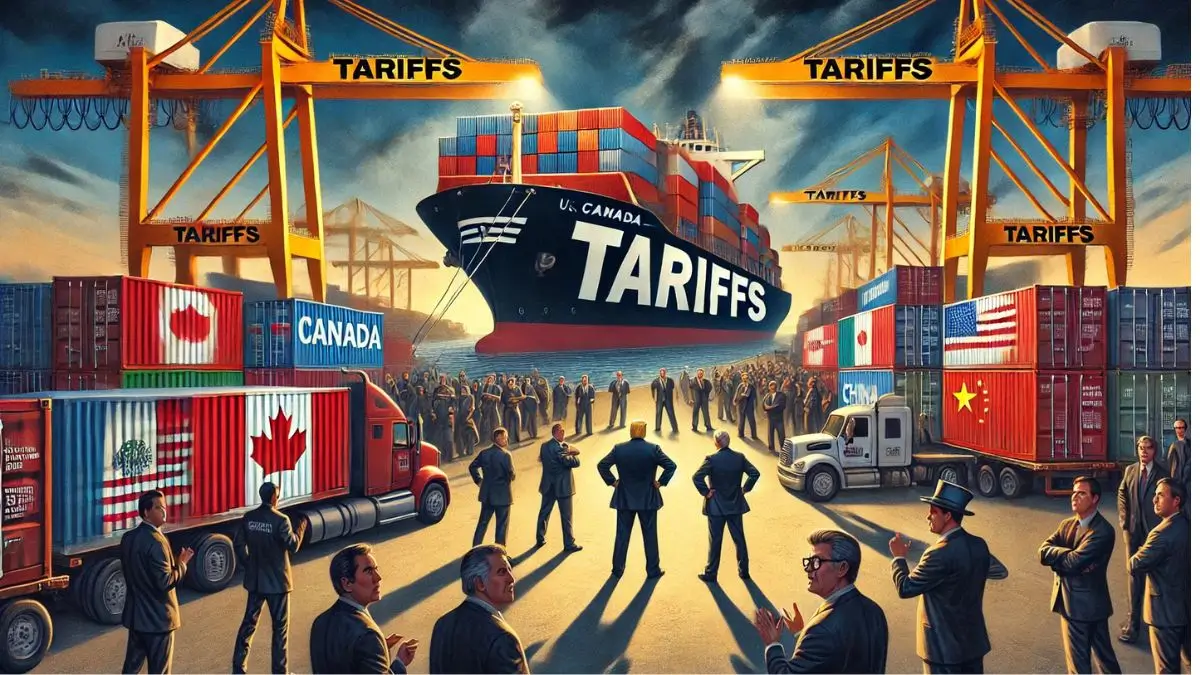The Trump administration has imposed sweeping tariffs on imports from Canada, Mexico, and China, significantly altering trade relations and increasing economic tensions. These tariffs, effective from March 4, 2025, have raised import duties to levels unseen in decades, affecting key industries, supply chains, and diplomatic ties. While the move aims to encourage domestic manufacturing and reduce trade imbalances, it has drawn backlash from trading partners and business groups, citing higher consumer costs and economic instability.
Key Points
Tariffs Imposed
- March 4, 2025 – 25% tariffs on all imports from Canada and Mexico.
- March 4, 2025 – An additional 10% tariff on all Chinese imports, on top of the existing 10% tariff from February.
Planned Tariffs
- March 12 – 25% tariffs on aluminum and steel imports.
- April 2 – Tariffs on all agricultural products and foreign cars (unspecified rates).
- Proposed Investigations – Potential tariffs on copper and lumber imports globally.
Reasons for Tariffs
- Initial Justification – Trump linked the tariffs to stopping the flow of drugs and illegal migrants from Mexico and Canada.
- Later Shift in Reasoning – Trump stated tariffs were meant to bring back manufacturing to the U.S., particularly in the automobile industry.
Economic and Political Reactions
Canada’s Response
- PM Justin Trudeau announced retaliatory tariffs of 25% on $155 billion of U.S. goods.
- First phase ($30 billion) effective immediately, rest in 21 days.
- Canada strengthened border security, including leasing Black Hawk helicopters for patrols.
Mexico’s Response
- Increased National Guard deployment (10,000 troops) at the U.S. border.
- Stepped up cartel crackdowns and fentanyl seizures.
China’s Response
- Chinese Ministry of Commerce condemned the tariffs as “bullying” and vowed countermeasures.
- China remains less affected as only 15% of its exports go to the U.S. (compared to 80% for Canada/Mexico).
Impact on Industries
Automotive Sector
- 40% of cars and trucks sold in the U.S. are imported, mainly from Mexico.
- Tariffs could disrupt supply chains and increase vehicle prices.
Consumer Goods
- Price hikes expected on beer, chocolate, toilet paper, hot-rolled iron, and other essential imports.
Medical Devices
- Companies like Aeroflow Health may cut back on product offerings due to tariff-induced costs.
General Economic Impact
- Higher prices for American consumers and businesses.
- Lower economic growth across North America.
- Potential job losses in Canada and Mexico, prompting wage support programs.
Expert Opinions
- Economists warn that the tariffs will have negative effects on all parties, especially Canada and Mexico.
- Business leaders criticize tariffs, stating they raise costs and disrupt industries with integrated supply chains.
- Labor unions condemn tariffs, calling them an unjustified attack on allies.
| Summary/Static | Details |
| Why in the news? | Trump’s Imposed Tariffs on Canada, Mexico, and China |
| Planned Tariffs | 25% on aluminum/steel (March 12), tariffs on agriculture/foreign cars (April 2). |
| Trump’s Justification | Initially to curb drug/migrant flow, later to boost U.S. manufacturing. |
| Canada’s Response | 25% tariffs on $155 billion of U.S. goods, increased border security. |
| Mexico’s Response | National Guard deployment, cartel crackdown, fentanyl seizure efforts. |
| China’s Response | Condemned tariffs as “bullying,” vowed countermeasures. |
| Economic Impact | Higher consumer prices, disrupted supply chains, slower North American growth. |
| Industry-Specific Impact | Automotive, medical, and consumer goods sectors hit hardest. |
| Business Reactions | Widespread criticism from companies and labor unions over economic harm. |
| Expert Opinions | Economists and industry leaders predict significant negative consequences. |



 Operation Hawkeye: US and Jordan Strike ...
Operation Hawkeye: US and Jordan Strike ...
 India and the Netherlands Set Up Joint T...
India and the Netherlands Set Up Joint T...
 Brazil Hands Over BRICS Presidency to In...
Brazil Hands Over BRICS Presidency to In...







